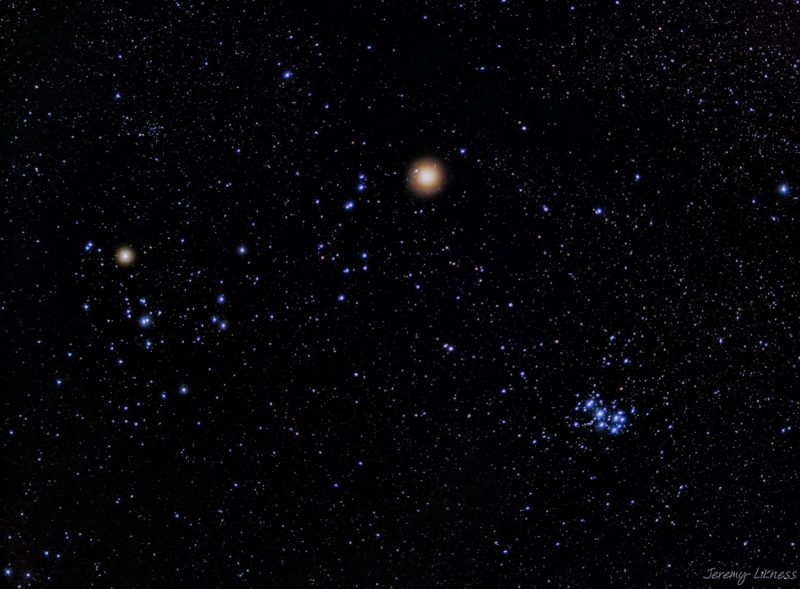
Tonight, go outside, and let your eyes adjust to the dark. Then note the subtle differences in the colors of the stars. Let’s explore some of the stars that you’ll see flickering against the black backdrop of night in winter. In fact, there’s a whole spectrum of star colors sparkling up there, from cool red stars to middle-range yellow stars to hot blue-white stars.
EarthSky 2023 lunar calendars available! They are going fast!
The colors of the stars
First, look high overhead in the winter evening sky for a bright star with the name of Capella. Capella’s nickname is the Little She-Goat, and it lies in the constellation Auriga the Charioteer.
So can you spot Capella? Once you find it, notice that it’s a golden star. The fact is, a star’s color indicates its spectral type. More about spectral types of stars below.
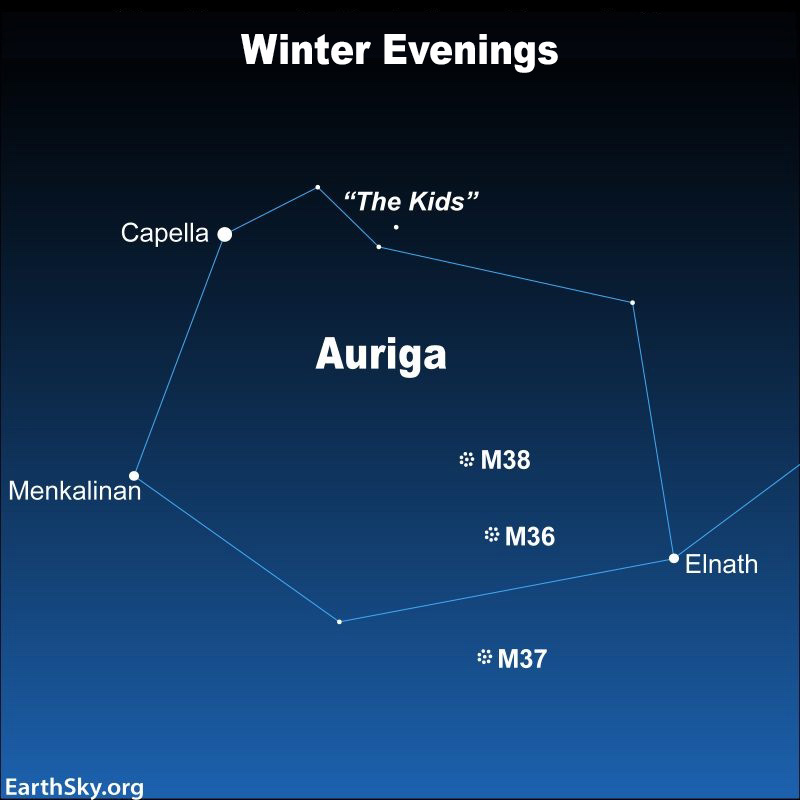
Compare the different colors of the stars you see
Now try contrasting golden Capella with some of the stars in nearby Taurus the Bull. First, find the reddish star Aldebaran, the Eye of the Bull, and the bluish stars of the misty Pleiades cluster. Do you see the difference?
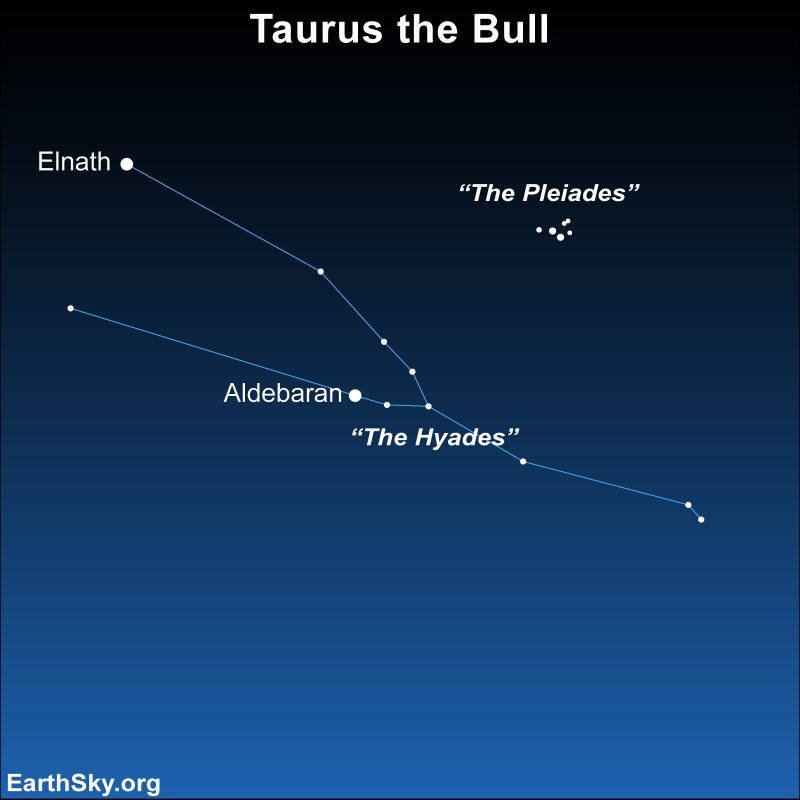
What about Sirius?
Sirius in the constellation Canis Major the Greater Dog is our sky’s brightest star, after the sun. It’s usually described as a white star.
So Capella is golden, and Sirius is white. But, by the way, Capella and Sirius often flicker deliriously when low in the sky. This effect has nothing to do with the colors of the stars themselves but rather is caused by Earth’s turbulent atmosphere. The twinkling effect is particularly prominent with the stars Capella and Sirius because they are so bright.

Next, check out Orion
Orion the Hunter, a prominent constellation in the winter sky, sports a noticeably red star and blue star. The red star is Betelgeuse marking one shoulder, while the blue star is Rigel marking the opposite knee.
Notice the shades of red and orange of Betelgeuse in the creative collage below.
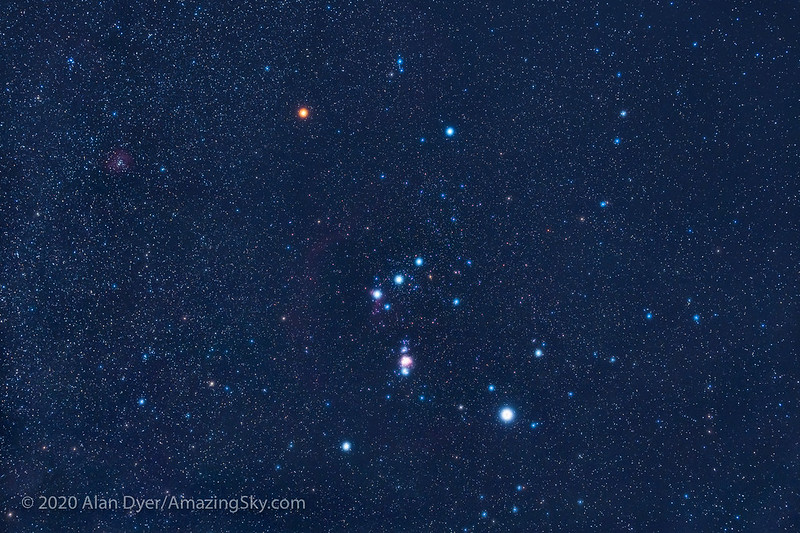
The true colors of stars
And you don’t even have to know any star names, or any constellations. Just glance around the sky, and notice the subtle color differences in the stars.
It’s helpful to know that a star’s true colors are more apparent as the star climbs higher in the sky, moving above the turbulence of Earth’s atmosphere. So, if you have good eyesight and a dark, clear sky, you should be able to detect hints of color within the brighter stars.
And if you have difficulty discerning star colors with the unaided eye, look at the bright stars through binoculars. A useful trick is to put the star out of focus in your binoculars so the color will become more obvious.
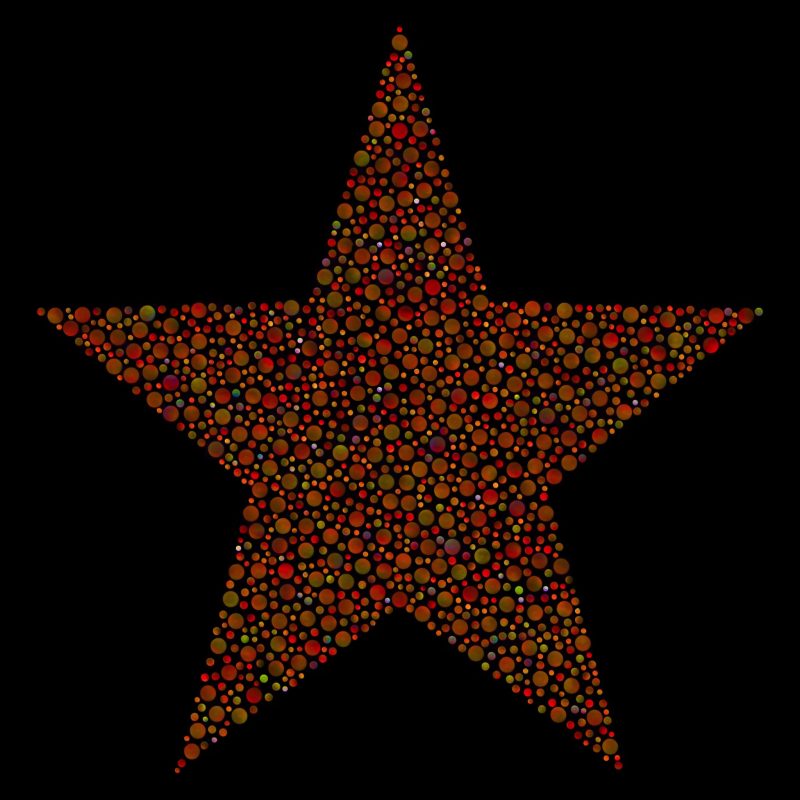
Why do stars have different colors?
The light of a star reveals many things, including the stars’ surface temperatures. The yellowish color of Capella indicates a mid-range surface temperature, much like our sun. The red of Aldebaran is typical of the lower surface temperature of an older star, whereas the blue of the Pleiades reveals their high surface temperature and young age.
In fact, the surface temperature – or color – of a star determines its spectral class. On the HR diagram below, you can see the different spectral classes listed across the bottom of the chart with temperatures going from hottest to coolest. Also, it shows the colors of stars associated with each spectral class and temperature.
So what are the spectral classes of Capella, Aldebaran, Sirius, Betelgeuse, Rigel and the Pleiades? Capella is a G star. Our sun is also a G star. Both our sun and Capella shine with a golden light. Aldebaran and Betelgeuse are cool stars and appear as reddish stars. Aldebaran is a K type star and Betelgeuse is a M type star. Sirius is an A type star and appears white. Rigel and the stars of Pleiades are type B stars.
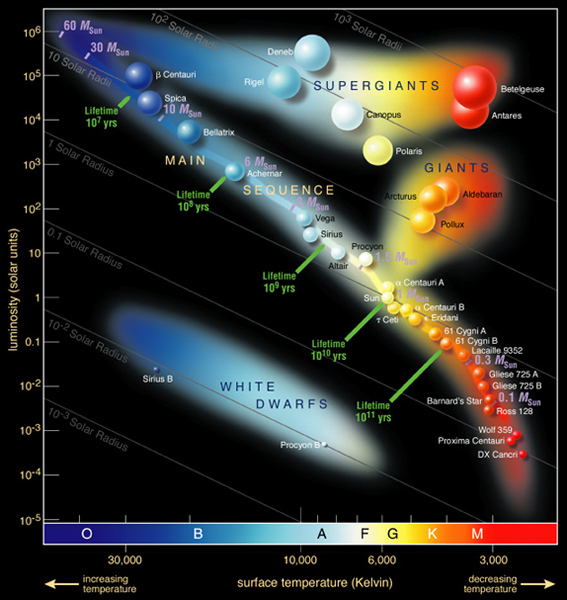
Bottom line: Winter is the perfect season for noticing the colors of the stars. Have you ever noticed them? By all means, go check them out tonight! And now you also can tell the temperature of a star by its color.











